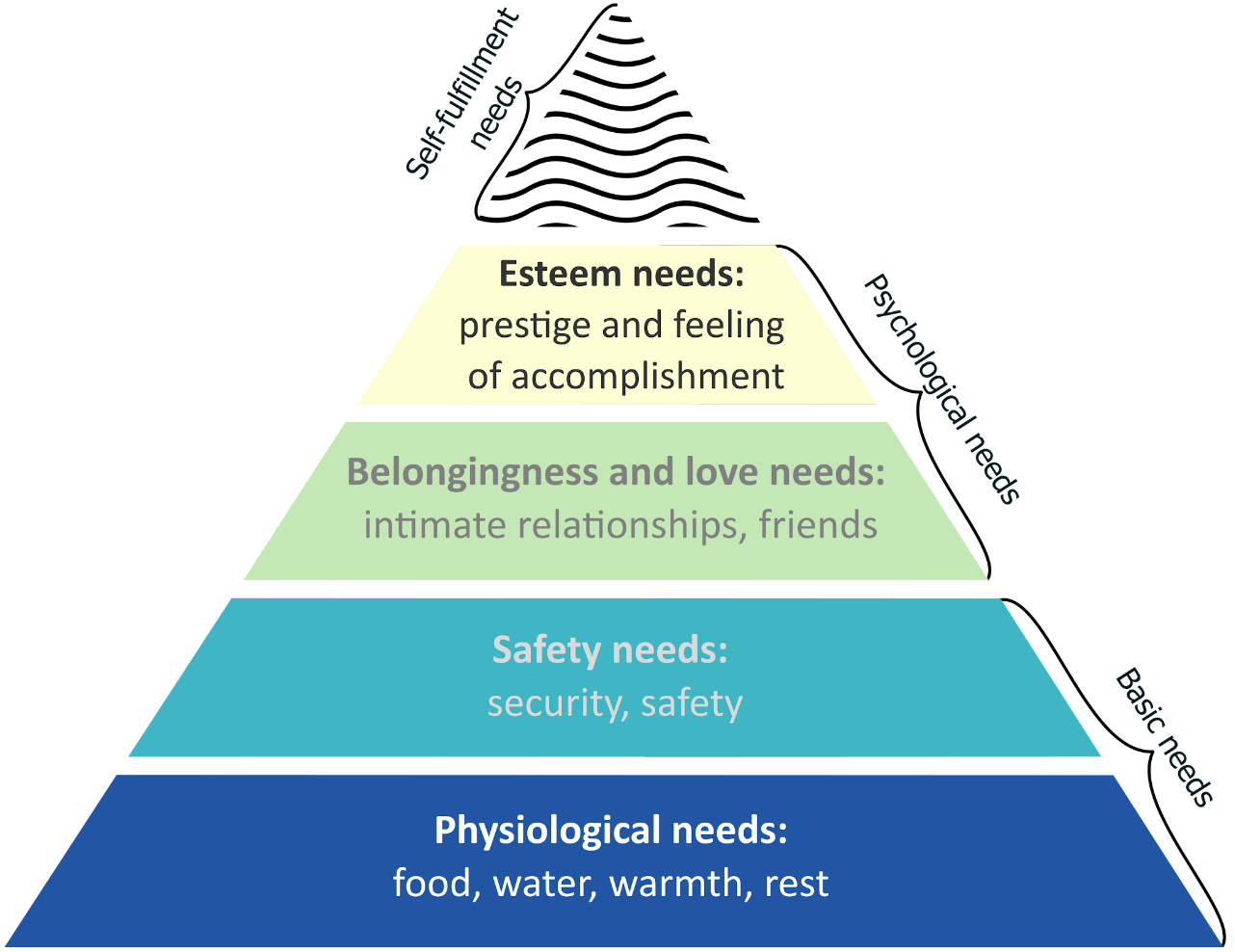What is the PLEES index?
The news is filled with stories of the climate changing. It talks about goals and different scenarios to aim for or avoid at all costs. But what do all these numbers and letters mean? How would life chhange if global temperatures raise by 2°C? Then what about 8°C?
Maslow (1943) argued that human motivation is driven by needs and identified five levels of human needs, arranged hierarchically. These levels can be represented in a pyramid. The lowest level includes the basic or physiological needs, such as breathing or feeding oneself. Once these primary needs have been satisfied, one gradually moves up the pyramid to the highest level, representing the possibility to achieve personal satisfaction and fulfillment. Using the representation of his hierarchy as a pyramid, we linked each level of the pyramid to an index. The mapping is schematically shown in this figure, with the Maslow's pyramid of needs depicted on the left side, going from the most basic physiological needs to higher level self-fulfillment needs. The corresponding pyramid on the right illustrates the quantifiable and measurable quantities that we use to construct the PLEES index.


The PLEES index is a tool to help visualise the impact of climate change on different aspects of life. The index is made up of four parts which represent how quality of life will change, namely: Povery rate, Life Expectancy, Employment rate, and life Satisfaction. Let's have a closer look at each of these aspects.

